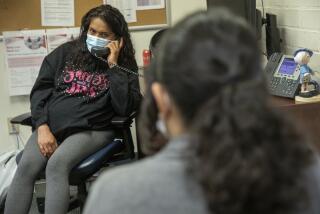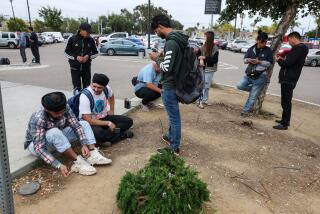PUC Says Half of Eligible Used ‘Lifeline’ Phone : Customer Response Lower Than Expected
- Share via
Only about half of California’s eligible households took advantage of cut-rate basic telephone service for low-income residents in the program’s first year, the Public Utilities Commission reported Wednesday.
As of June 30, the PUC counted 493,768 telephone customers who had signed up for so-called Lifeline service.
The service was made available in July, 1984, to households with total income of $11,000 or less--a threshold raised to $11,500 this year. Lifeline service is available only to a principal residence served by a single telephone number, and applicants must sign a statement of eligibility provided by the local telephone company. According to census and other statistical data, nearly 1 million California households would meet the income test.
Income Threshold Raised
Because response to the service fell below expectations, however, the PUC last March increased the income threshold and ordered local telephone companies to publicize Lifeline service, which has been done with flyers inserted in monthly billing envelopes.
The Lifeline program ended its first year with a huge surplus. By June 30, the PUC reported, the fund still contained $43.5 million--more than half of the $79.5 million generated by a new tax that was levied to finance the service.
Lifeline, the restrictions on eligibility and the funding through a 4% tax on long-distance calling within the state were authorized in the Moore Universal Telephone Service Act. Assemblywoman Gwen Moore (D-Los Angeles) introduced the legislation in anticipation of the breakup of the Bell System on Jan. 1, 1984. That breakup ended a complex system of internal Bell subsidies in which such services as Yellow Pages advertising and toll rates were priced above cost; those subsidized basic service offered below cost in compliance with a longstanding congressional mandate that “universal” telephone service be offered throughout the United States.
30 Local Calls
However, before American Telephone & Telegraph was divested of its local operating companies, anyone who could live with the service restriction could sign up for the cut-rate service, which provided 30 local calls and unlimited incoming calls. Many affluent customers took advantage of the service at their vacation homes, as did many working couples who used their home phones for local calling relatively rarely.
But that service expired with the Bell System. The Moore act replaced those Bell subsidies with revenue from a new 4% tax on intrastate long-distance calls. California’s was the first such law, and its experience is being studied by other states.
The report is the PUC’s first annual report to the Legislature as required by the Moore act.
LIFELINE ELIGIBILITY
To be eligible for Lifeline telephone service one must: Have a household income of no more than $11,500 from all sources.
Request service for a principal residence only (no vacation homes).
Have only one telephone line (one number) serving the residence
Sign a declaration of eligibility with the local company.
Monthly Rates Pacific Bell: $1.48 in areas with measured-usage service* (all of Los Angeles and much of Orange counties) or a $3.38 flat rate offering unlimited local calls where measured-usage service is unavailable.
General Telephone: $1.87 for measured service* or $4.12 flat rate.
* Allows 30 untimed, local calls, then 10 a call from 31 calls to 40 and 15 cents for each call thereafter.
Sources: PUC, Pacific Bell, General Telephone.
More to Read
Sign up for Essential California
The most important California stories and recommendations in your inbox every morning.
You may occasionally receive promotional content from the Los Angeles Times.










